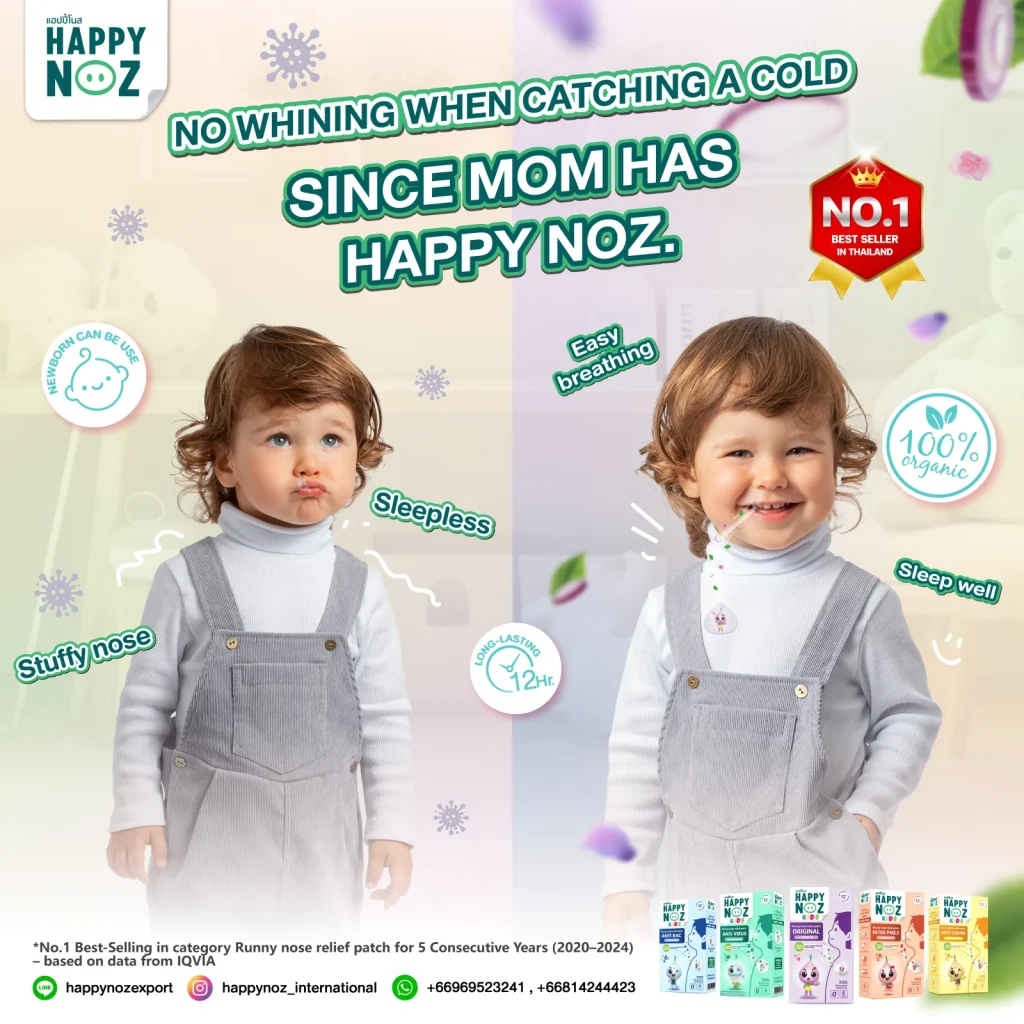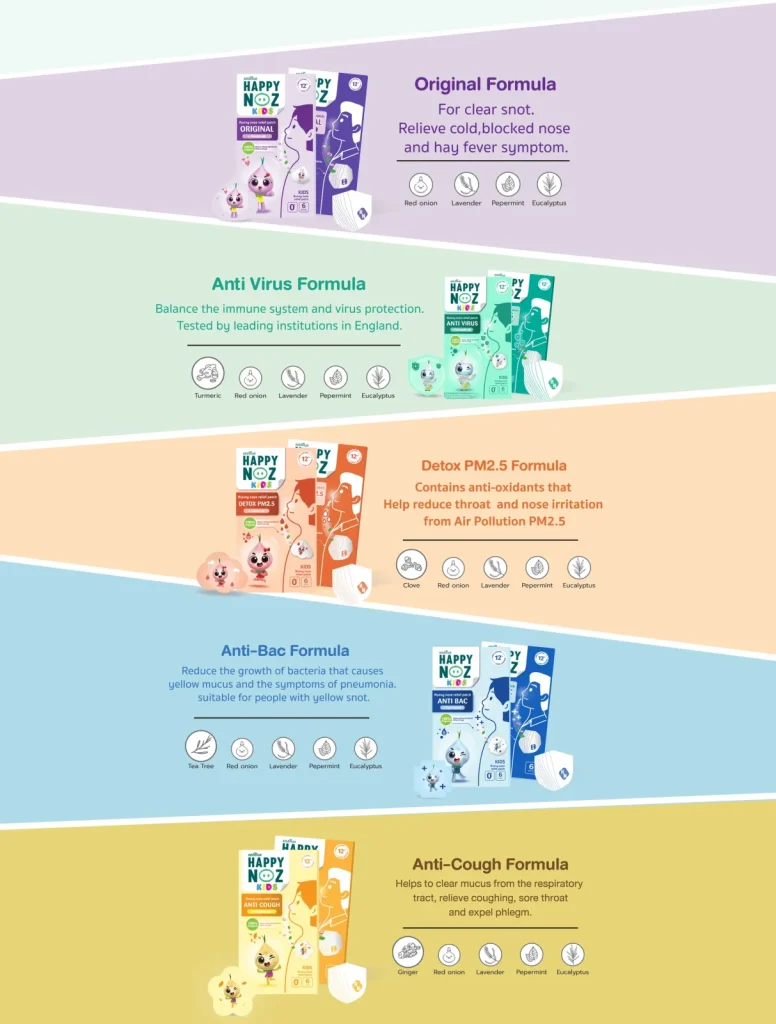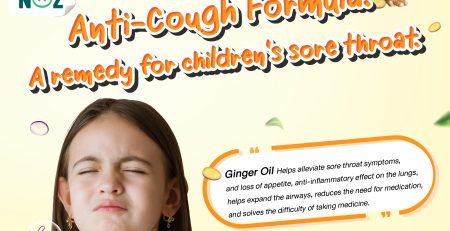Runny Nose Color Change: What It Reveals About Your Child’s Health
Children’s upper respiratory systems are particularly delicate and sensitive to the environment. Therefore, a runny nose is a common symptom and often the first thing mothers notice when their child starts to feel unwell. At the same time, a runny nose may seem like just a fluid expelled by the body, medically, the color, consistency, and amount of nasal discharge can significantly reflect the body’s health status.
Snot is not waste; it’s a natural mechanism the body creates to trap dust, germs, and foreign particles from the air. Especially in young children, whose immune systems are still developing, observing the characteristics and “color of the snot” is another important tool that helps mothers better understand their child’s health.
Clear Nasal Discharge 🔵
Clear nasal discharge is a normal condition commonly found in children. It may result from minor irritations like dust, or pollen, or be an initial symptom of a common cold. If your child has clear nasal discharge accompanied by sneezing, itchy eyes, or occasional dry cough, consider the possibility of allergies.
White or Cloudy Nasal Discharge ⚪️
When nasal discharge becomes thicker and turns white or cloudy, it indicates that the body is responding to certain viral infections, especially during the recovery phase. This type of discharge is often seen in the early stages of the flu or when the nasal lining is slightly inflamed.
Yellow Nasal Discharge 🟡
The yellow color of nasal discharge is typically caused by white blood cells, which fight off germs, being expelled with the mucus. It’s a sign that the body is still in the process of fighting an infection. This symptom usually occurs in the middle of an illness, such as a cold or early-stage sinusitis.
Green Nasal Discharge 🟢
If the nasal discharge turns dark green and is thick and sticky, along with fever or pain in the nasal cavities, it may indicate a bacterial infection. Especially if symptoms persist for more than 10 days, additional medical evaluation from a doctor is recommended to determine appropriate treatment.
Bloody Nasal Discharge (Pink or Red) 🔴
Nasal discharge with a red or light pink color indicates the presence of blood, which may be caused by blowing the nose too hard or dry air. However, if blood is frequently present in the nasal discharge or accompanied by pain, consult a doctor immediately.
Black Nasal Discharge ⚫
Although black nasal discharge is rare in children, it can be a warning sign of exposure to dust, toxic fumes, or fungi in the nasal cavity, especially in immunocompromised children, who should receive prompt medical attention.
The color of nasal discharge is a clear indicator of your child’s health. Consistent observation of nasal discharge characteristics can help parents monitor the progression of illness and assess whether it’s a condition that can be managed with basic home care or requires close attention from a medical specialist. However, each child’s symptoms may vary. If you are unsure or the symptoms do not improve within a reasonable time, consulting a pediatrician remains the safest and most appropriate option for your child’s long-term health.
Additionally, symptoms can be relieved with Happy Noz Patch, made from 100% organic essential oils. Available in 5 formulas, they help clear breathing, are gentle, and have a relaxing scent. They can be attached to clothing, pillows, fans, or air conditioners without direct skin contact.
💜 Original Formula – Contains extract from a special variety of red onion oil, which helps relieve cold symptoms, nasal congestion, runny nose, and wheezing. Suitable for those with clear nasal discharge.
💙 Anti Bac Formula – Contains tea tree oil extract, which helps relieve symptoms associated with yellowish nasal mucus.
💚 Anti Virus Formula – Contains turmeric oil extract rich in antioxidants, which helps strengthen the immune system.
🧡 Detox PM2.5 Formula – Contains clove oil extract, high in antioxidants, which helps relieve nasal and throat irritation caused by dust.
💛 Anti Cough Formula – Contains ginger oil extract, which helps soothe cough, sore throat, and expel phlegm.
Sources:
- What your snot can reveal about your health: https://www.bbc.com/future/article/20250708-what-your-snot-can-reveal-about-your-health
- What the Color of Your Snot Really Means: https://health.clevelandclinic.org/what-the-color-of-your-snot-really-means?
- What Does the Color of My Snot Mean? : https://www.healthline.com/health/snot-color
- Predicting health from snot color: https://www.rcot.org/2021/ForPeople/RCOT-Knowledge/64b24013dfee2411e2b1b443f1b441f14713272d?














